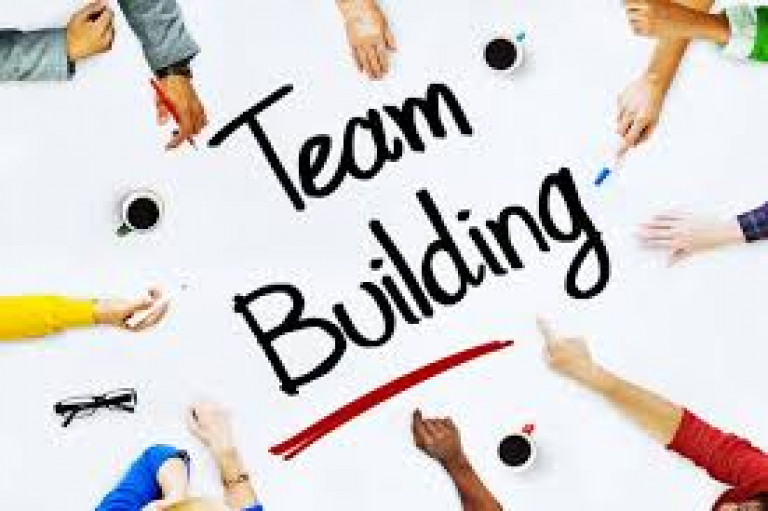Every organization’s depends heavily on talent acquisition. But finding, luring, and employing qualified people who can help the expansion and success of a firm isn’t always as easy as we want it to be. In this article, we talk about talent acquisition— its definition, little nuances, and different tips and best practices to become better at it.
So read on if you want to learn how to find top applicants and stay ahead of the competition in today's fiercely competitive employment market. You’ll also pick up some guidelines and best practices for crafting a successful talent acquisition strategy.
So let's get started!
What is Talent Acquisition?
So what is talent acquisition? In a nutshell, it’s the process of finding, attracting, and hiring qualified persons to satisfy a business's present and future needs. Normally, human resource departments handle this part of the business operation. But many small business owners must also master this skill and manage talent acquisition independently.
Talent acquisition aims to find and develop skilled team members to help your business or organization reach its goals and objectives. It also stretches past talent pooling and covers processes around new employee onboarding or using personality assessments to verify if a person is a fit for your team.
Great talent acquisition doesn’t just stop with pooling new talent and putting them through a screening process. Instead, it attracts the right players so that you’re more likely to find great fits for your organization and then putting them through a streamlined pipeline that assesses their skills, strengths, weaknesses, and more.
Moreover, great talent acquisition seeks to do two things: listen and analyze. It takes a calculated approach to recruitment, ensuring that hires “fit the bill” and stay in the organization for a long time.
Recruitment vs Talent Acquisition: What’s the Difference?
Recruitment and talent acquisition are often used interchangeably, but they are not always the same. There are, however, some obvious overlaps. Recruitment, much like talent acquisition, is about finding and hiring applicants to fill specific job openings is the process of recruitment. This might include publishing job ads, examining resumes, and doing interviews.
On the other hand, talent acquisition is a more strategic form of hiring. Regardless of whether there are any vacant positions, it focuses on finding and attracting top people who can add long-term value to a company. More than finding employees to fill in job vacancies, talent acquisition involves other tasks and goals. Some of them include:
- Building a solid employer brand
- Determining your company values and culture
- Seeking ways to strategically find skill and cultural fit (especially since 46% of job seekers see culture as crucial when looking for work)
- Cultivating relationships with potential hires
- Maintaining a talent pipeline.
Your goal in talent acquisition is to avoid passive candidates and find skilled employees who will add immense value to your department or organization. Talent acquisition is a collection of recruitment strategies and tactics that focuses on developing a strong talent pool for future recruiting needs, whereas recruitment is a reactive process that concentrates on filling current job opportunities.
Why is Talent Acquisition Important?
Companies and organizations of all shapes and sizes should prioritize talent acquisition if it wants to remain competitive in this day and age. Here are some reasons why:
Ensures a skilled workforce
By implementing a strong talent acquisition plan, you ensure that your organization continues to gain access to skilled workers. In this age of artificial intelligence, we might have gained access to tools that can perform menial and repetitive tasks. However, we must keep looking for people with initiative, creativity, drive, and passion.
A business must guarantee that it attracts and employs qualified people with more than knowledge. With talent acquisition, you’re able to do just that.
Competitive advantage
Companies should set themselves apart from their rivals. And one way to do that is to build a reputation as a desirable workplace. Talent acquisition also focuses on employee branding and programs. These are ways to attract, attain, and retain the best employees.
And talent acquisition doesn’t just stop with slapping a salary on a job description. It also focuses on creating programs and initiatives that other companies in your industry might not have.
Improves employee happiness
By ensuring workers feel valued and appreciated, a properly implemented talent acquisition plan can aid in retaining staff. Employee motivation, productivity, and satisfaction may all therefore increase. Recruiting top-level skills is one thing. It’s a new challenge to recruit skilled workers who will remain happy in the workplace. Studies show that work satisfaction can improve workplace productivity by up to 12%.
Reduces hiring costs
By streamlining the hiring process and speeding up the time it takes to fill vacancies, an efficient talent acquisition approach can lower hiring costs. It can help reduce the high costs associated with staff turnover. For instance, talent acquisition also looks into developing employee onboarding programs that help improve employee retention. After all, a good onboarding process has been said to improve employee retention by as much as 82%.
Promotes diversity and inclusion
One buzzword that’s grown in talent acquisition is inclusion. One study by Deloitte that included 1,300 full-time employees showed that inclusivity played a crucial factor in acquiring and keeping talent. A varied and inclusive workforce can contribute fresh viewpoints and creative solutions, improving problem-solving and decision-making.
Talent acquisition also focuses on inclusion. It helps you locate and employ people with diverse backgrounds and experiences so that your workplace continues to thrive in diversity and inclusion.
Talent Acquisition Tools for Better Results
Nowadays, you can streamline your talent acquisition processes by using tools that will improve the entire process. Here are some talent acquisition tools that should be a part of your recruitment pipeline.
Testing and Assessment
Tools for testing and assessment make it easier to examine individuals' abilities, backgrounds, and fit, resulting in the best candidates being chosen. We highly recommend Workstyle, a candidate or new hire assessment tool that helps you evaluate a candidate or employee and helps you see how they fit into the organization.
Job Aggregators
You can use job aggregators to disseminate job advertisements to a larger audience. Some great examples of these include Indeed, LinkedIn and Glassdoor. These kinds of websites help to draw in more qualified applicants.
You can also use these websites to improve your employer branding by gathering employee reviews and providing a snapshot of your organization with a great-looking company profile. One great example is how companies create company profiles on LinkedIn and post content about:
- Company news and updates
- Industry insights and thought leadership
- Company culture and values
- Job openings and recruiting efforts
- Employee success stories and achievements
- Interviews with industry experts
- Webinars or events
- Tips and advice
- Videos and visual content
- Customer case studies and success stories
AI and Automation
Using AI and automation in the hiring process can help expedite the hiring process, saving time and improving efficiency. For example, AI can be used to screen resumes and filter out those that do not meet the minimum qualifications for a position.
This can save recruiters time and help ensure that the most qualified candidates are moved forward in the hiring process. In some organizations, hiring managers use artificial intelligence to schedule interviews with candidates, eliminating the need for recruiters to spend time coordinating schedules. Some companies also use chatbots to engage with candidates and answer common questions, saving recruiters time and improving the candidate experience.
Applicant Tracking System
An Applicant Tracking System (ATS) is a software system that helps manage the recruiting process, from posting job openings to onboarding new hires. An ATS can help manage resumes by organizing them, making them searchable, and tracking which candidates have been contacted or interviewed.
An ATS can help recruiters track a candidate's progress through hiring, including scheduling interviews and sending follow-up emails. It also organizes communication between recruiters and candidates by keeping all emails, notes, and feedback in one place.
Talent Acquisition Process
Any company's success depends on how well it handles talent acquisition. This requires that you have a great talent acquisition process in place. Here’s a quick look at how a talent acquisition process should look in your organization.
Step 1) Sourcing and Lead Generation
The sourcing process and lead generation are the starting point for a good talent acquisition process. This can often be inbound, but should also have an outbound aspect to it as you want to be able to locate possible applicants who are not yet prepared to apply for a position but might be interested in future chances.
Great talent acquirers learn the art of slow-burning talent recruitment. They create connections with potential candidates through networking, social media, and other platforms, and maintain their interest in the company over time.
A good talent acquisition plan must include both lead creation and sourcing. Early identification and relationship-building with potential candidates can help firms construct a strong talent pipeline that can be used to rapidly and effectively fill unfilled positions in the future.
Step 2) Attracting and Recruiting
Recruiting involves actively seeking out and interacting with prospective employees who might qualify for a particular job position. This process includes creating programs that will keep possible candidates engaged in a company’s employment branding.
In talent acquisition, your goal is not simply to attract and recruit just anyone. You want to recruit and attract the right people. This involves developing a strong employer brand and value proposition that helps people understand what kind of company you are so they can evaluate on their own if they should work in your company or now.
Highlighting your organization's mission, values, and culture is crucial, together with its perks, pay, and possibilities for professional growth.
Step 3) Interviewing and Assessing
Employers, HR departments, and/or HR managers interview candidates all the time. It’s a trick of the trade. But not all interviews are a good use of one’s time. In fact, being able to hold good interviews is a fundamental part of great talent acquisition.
Human resource professionals use structured interview techniques 74% of the time, and behavioral interviews 73% of the time. They do this to improve employee assesements and find the best potential fit with the company using various techniques. Some tools that can help with this include personality tests, work samples, and reference checks.
For a list of some great interview questions to ask in your next interview, check out this list: Top 16 Interview Questions to Ask Candidates (+ FAQs)
Step 4) Checking References
Reference checks entail contacting a candidate's previous employers, coworkers, or other professional connections to learn more about their past job performance, skills, shortcomings, and overall suitability for the position and the company.
Before making a job offer, this can assist employers in making more educated recruiting selections and seeing any potential red flags or issues. ,An effective talent acquisition plan must include reference checks since they can assist employers make sure they are employing people who will live up to their expectations and contribute to the organization's long-term success.
Step 5) Making Final Selections
Organizations often use this stage to examine all the data gathered during the sourcing, recruiting, interviewing, and evaluation phases to identify the applicant who is the best fit for the position and the company.
When making final selections, get other stakeholders to weigh in on decisions. Ideally, you want the person directly supervising the new hire to participate in the selection process. They will be a big part of training and onboarding, so it only makes sense for them to weigh in.
Step 6) Hiring and Onboarding
The elements of the talent acquisition process entail bringing the chosen candidate on board and integrating them into the company. In your hiring and onboarding process, you’ll do everything to bring a new recruit on board, including:
- Making a job offer to the chosen candidate
- Discussing wages, perks, and other employment terms
- Orienting new hires to a company’s mission, vision, and culture
- Introducing new hires to the rest of the team.
Sometimes, you might need to work with the applicant to iron out any last-minute details and guarantee a seamless transfer from their current position to the new one. On top of orientation, there could be some training involved. We also highly recommend designating a mentor or buddy to support them and ensure they have the necessary resources and tools to succeed in their new position.
Best Practices When Acquiring New Talent
Talent acquisition best practices help you get the process right. So allow us to share some tips and tactics to improve your lead generation, selection, hiring, and onboarding.
1. Prioritize What You Need
Prior to hiring new employees, prioritizing the knowledge and expertise needed for the position is crucial. This may entail writing a job description that defines the position's duties, prerequisites, and necessary competencies.
You can concentrate your efforts on recruiting and choosing people who are the best matches for the position and the company by prioritizing what you need.
2. Keep Track of the Talent Pool
It's critical to monitor the talent pool to stay informed about possible applicants who might later prove to be a suitable fit for the company. Order to track and analyze candidate data, this may entail maintaining a talent database or using talent management software.
Organizations can more quickly identify potential candidates and ensure they can find and hire the finest talent for their needs by monitoring the talent pool.
3. Invest in Succession Planning
Organizations that successfully acquire and develop talent master the art of succession planning. This involves leadership development, training, and promotion. There are many advantages to building leadership teams versus simply acquiring them.
For one, you can build a person’s skillsets and DNA from scratch, helping you create a more cohesive leadership team. Succession planning also improves employer loyalty as promoted managers and directors tend to have a greater sense of gratitude towards a company that invested in their development and career. Organizations are also more likely to have a talent pipeline ready to fill crucial roles as needed by investing in succession planning.
4. Get Everyone on Board
All organization members, from senior leaders to hiring managers to front-line staff, must be on board with and supportive of the talent acquisition process to succeed.
Organizations can ensure they can recruit and choose the best personnel for their needs by involving everyone in the talent acquisition process. This may entail educating hiring managers on the value of recruiting top talent, including them in the hiring process, and offering training and assistance.
5. Focus on Talent Management
Employee engagement, retention, and continuous development are all part of talent management. This involves allowing staff members to further their careers and additional activities like coaching and mentoring, awards and recognition, and professional development opportunities.
Organizations increase employee engagement, retention, and productivity by investing in talent management, which also helps them to attract and keep the finest personnel over the long haul.
Frequently Asked Questions
Who handles talent acquisition?
Human resources normally take care of talent acquisition. But sometimes, an organization could hire a Talent Acquisition Specialist or Consultant to refine and run the pooling and recruitment process. In larger organizations, hiring managers tend to delegate finding top talent to a specialized recruitment team that collaborates closely with HR. Conversely, some smaller businesses might not have the manpower or resources to hire dedicated talent acquisition teams.
Nonetheless, even small business owners can effectively find great recruits and fill open positions well with the right tools, know-how, and system. If you're a small business owner, you can also hire a talent acquisition consultant to set up the system for you, and you run it yourself.
What is the purpose of talent acquisition?
The main goal of talent acquisition is, to attract, and hiring the right candidates for a job or position within a business and fill in organizational needs to help scale the enterprise.
This way organizations can ensure they have the proper people with the skills, expertise, and experience needed to accomplish their business goals and objectives by hiring top talent. Effective talent acquisition could also lower turnover, boost productivity and employee engagement, and enhance organizational performance.
How can I Attract top talent in a competitive job market?
Companies should develop a strong employer brand, give competitive pay and benefits, and use a variety of sourcing channels and recruitment tools. Also, deliver a pleasant applicant experience, and foster a healthy work environment to attract top talent in a competitive job market. These tactics can aid in luring new workers and keeping top staff.
Is onboarding part of talent acquisition?
Onboarding is a crucial component of talent acquisition, indeed. It entails the process of integrating new hires into an organization and making sure they have the tools and support they need to be successful in their new positions.
A crucial step in the talent acquisition process, efficient onboarding can enhance employee engagement, retention, and performance.
Final Words
Finding and developing talent is essential to the success of every firm, so talent acquisition should be a priority. Sure, it’s not always front and center like marketing, sales, or product development. But it helps you refine the most important resource in your organization— your human resource.
Expert talent acquisition takes a comprehensive approach to talent sourcing, assessing, and recruiting. By following these tips and best practices, organizations can increase their chances of hiring the best talent and building a competitive edge in their respective industries. Ultimately, talent acquisition is not just about filling job vacancies but about finding the right people to drive your organization's innovation, growth, and success.




